Some plants are aquatic and can grow and blossom in water. Others can be raised when in areas with little or no sunlight. Some plants cannot survive without an appropriate dose and exposure to sunlight. In all, plants select breeding conditions due to their characteristic features.
Plants That Grow Against Fences
Below is a list of plants that can grow against a fence.
1. English Ivy
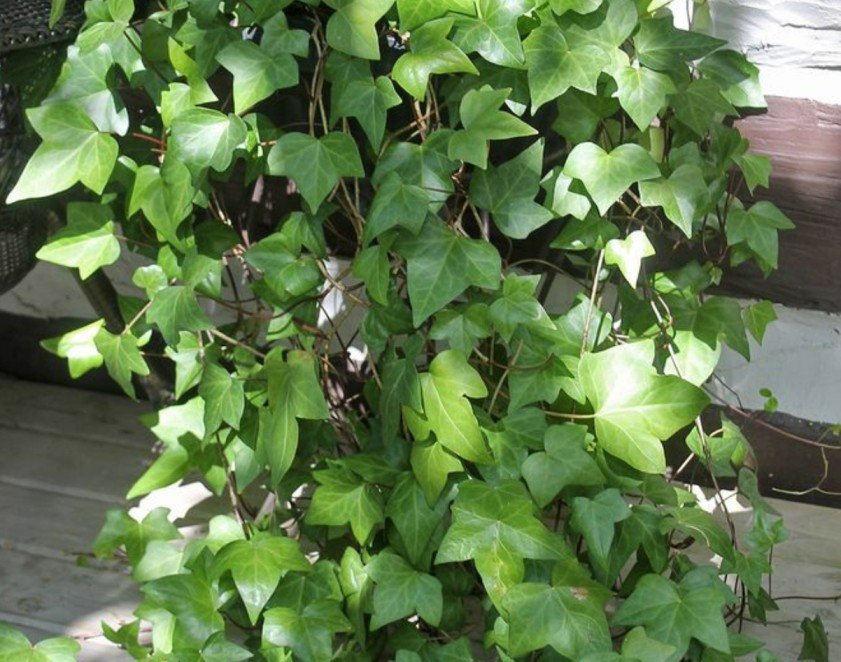
English ivy, also known as Hedera helix, is a flowering plant in the family Araliaceae. It is a rampant climbing evergreen vine native to most of Europe and western Asia and is mainly found in wild areas, gardens, climbing walls, fences, and trees in its habitat.
English ivy is easy to cultivate and can spread fast, covering the land it grows with a thick layer of green foliage. Therefore, it can be invasive if not pruned regularly. Did you know that Ivy means to grasp in Greek? It grows up to 20-30m high and can also grow on the ground without walls. English ivy grows best in zone 6-9.
2. Curtain Creeper
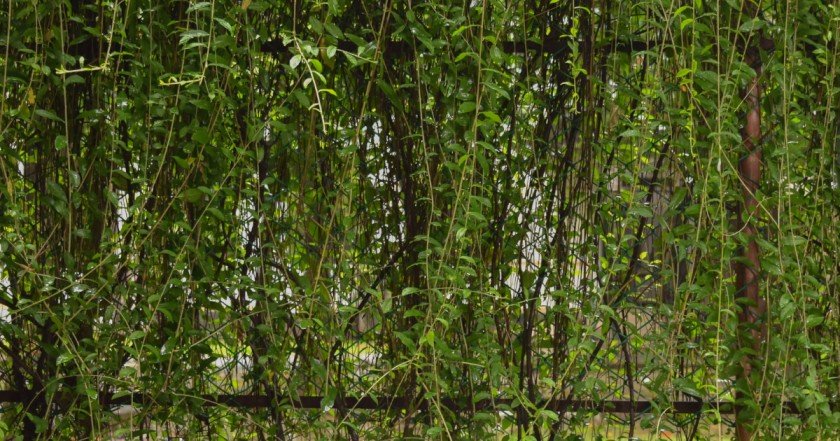
Curtain Creeper is a foliage plant grown because of its ability to create a green curtain. Curtain Creeper is from the genus Vernonia elaeagnifolia and is a vine and wall climber of the sunflower family Asteraceae. It is native to India and Burma. It is a lazy climber with a slender stem that falls beautifully after climbing walls or fences, resulting in a hanging effect that suits perfectly on a wall or railing, forming a “curtain,” giving the plant its name, curtain Creeper.
Creepers have a white bloom in bunches made up of small florets. Curtain Creeper grows well in zone 5-11.
3. Garlic creeper
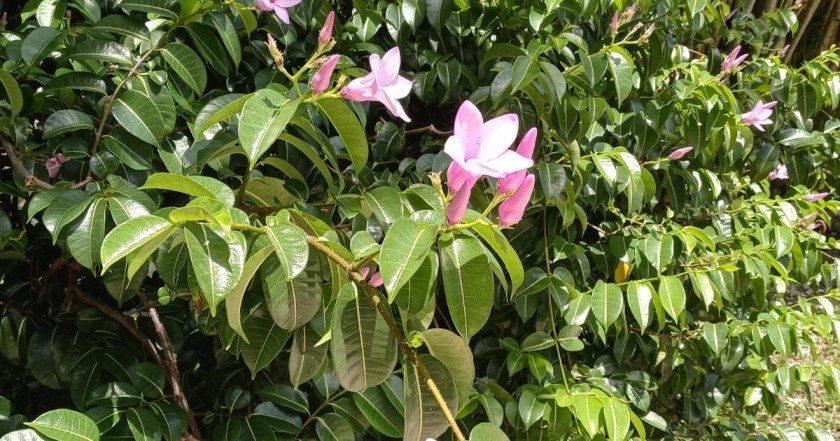
Garlic creeper is a fragrant purple-colored climbing flower of the genus Mansoa alliances from the Binoniaceae family. It is native to Northern South America and Central America and popularly known as forest garlic or wild garlic in the Amazon rainforest.
Garlic creeper is a perennial evergreen plant that grows on trellis or chain fences. They can grow up to 4-6 meters in height. They bloom twice a year, from October to March, with a funnel-shaped flower with a range of colors from purple to white as they age. As the name implies, it has a pungent garlic smell. They can be used as pain relief and a remedy for arthritis, rheumatism, and colds. The flowers are believed to bring good luck.
4. The Arctic Kiwi
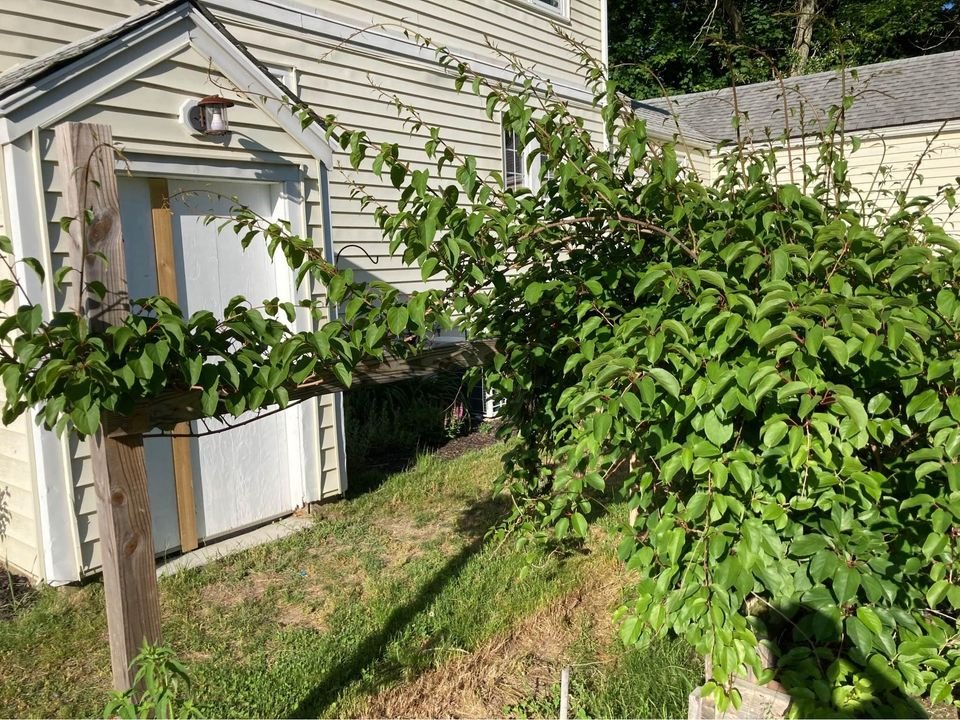
The Arctic Kiwi is a perennial foliage plant also known as Actinidia kolomikta. It is native to Asia and the Russian far East. This plant can climb all surfaces, such as trellises, walls, and chain-like fences. Actinidia is a fast-growing climber that has a hard twining vine called bine.
Kiwi can tolerate low temperatures of -34°C. The matured plant of about 150 days is not affected by low temperature, provided there is enough time to adapt. However, the rapid freeze can kill or split the vine. The plant can grow well in zones 3-8.
5. Rangoon Creeper
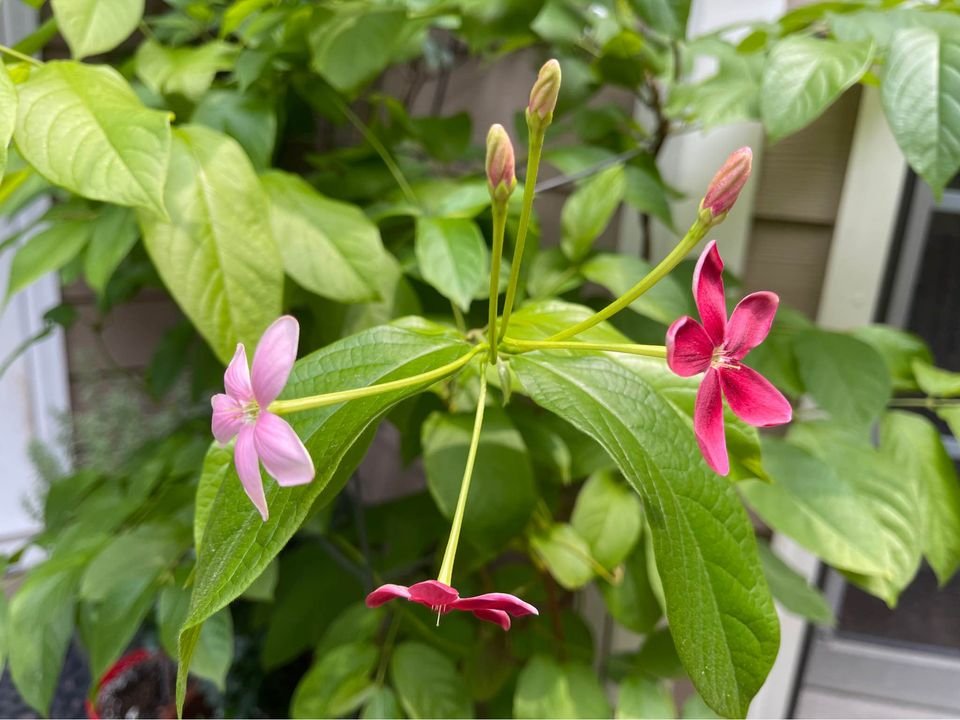
Rangoon creeper is a flowering climber and a fragrant flower called Combretum indicum. It is native to Tropical Asia and mostly found in zones 6-10.
Rangoon is a ligneous vine that grows up to 2-8 meters. They have an elliptical leaf with an oval base diameter of 3-7 centimeters. The arrangement of the leaves is the opposite. They have a scented flower with a color range from white-pink-red. The plant bears an ellipsoidal fruit that is 30-40 millimeters long. The fruit has five wings.
The matured Rangoon fruit taste like almonds. They are found in thickets around India and Malaysia and has naturalized in places like Thailand and Vietnam
6. Chilean Potato Bush
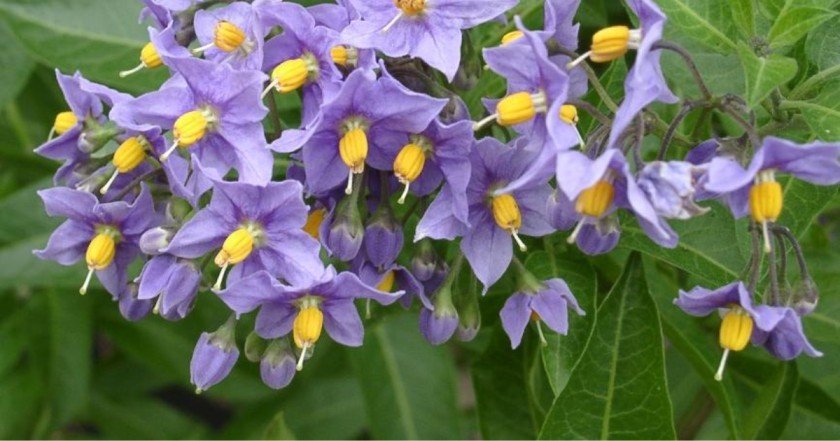
Chilean Potato Bush, also called solanum crispum. ‘Glasnevin,’ is a bright green leaf flowering plant with a beautiful fragrance and a blue-purple flower.
Chilean potato is a climber in the family Solanaceae with common names such as Chilean nightstand and Chilean potato vine. It can grow up to 6 meters tall and are ligneous. Chilean potatoes have a small bloom of 5 cm in width, and yellow ovaries appear in summer. They produce poisonous berries in autumn.
Solanum is usually grown as a garden plant and is a fast-growing plant. It also requires sun to grow well.
7. Boston Ivy
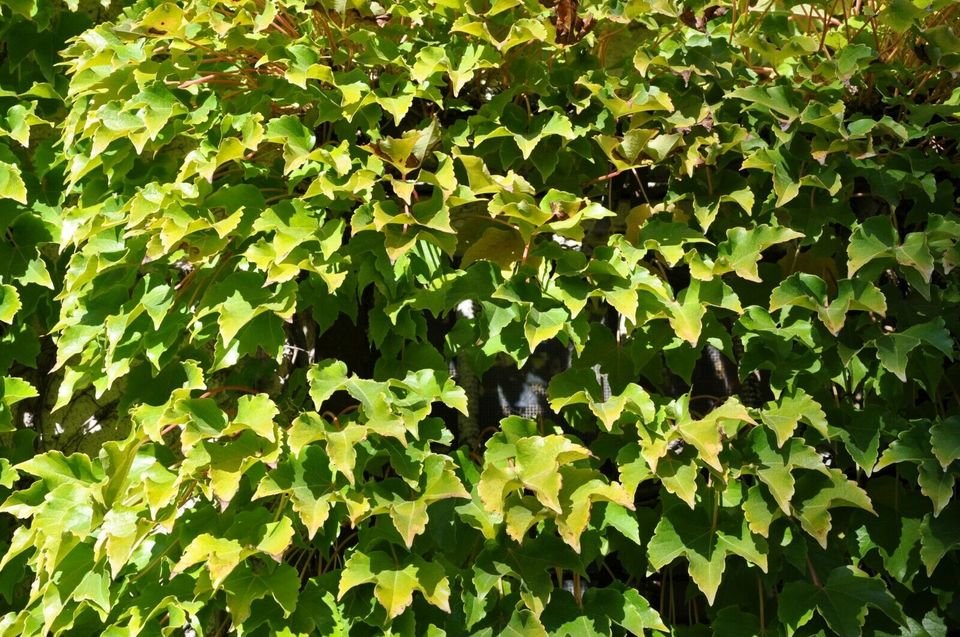
Boston Ivy is foliage, also known as Parthenocissus tricuspidata, and is a climber native to Eastern Asia, Korea, and China. However, the name Ivy is not related to the true Ivy. It is commonly called grape ivy and Japanese ivy. The deciduous woody vine has a height of 30 meters or more. It attaches itself to the wall by using tendrils. The leaves is a three, five, unlobed, or partially lobed. Boston Ivy always bears a dark-blue 10-20 mm long fruit.
8. Jasmine
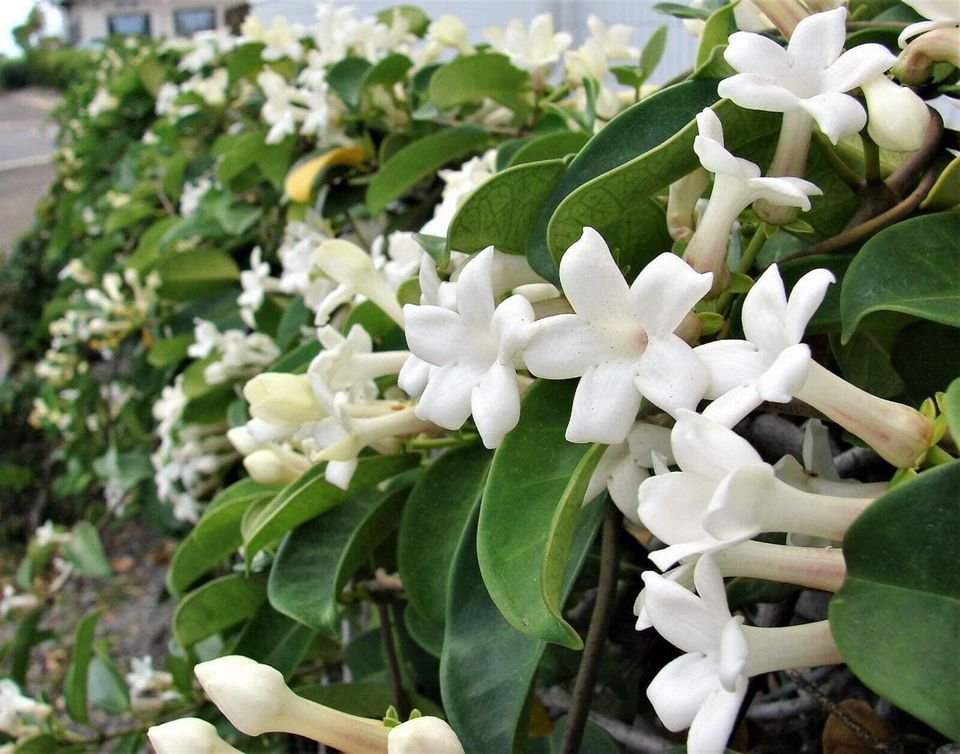
Jasmine is a flowering, fragrant, fast-growing plant of the olive family Oleaceae. Jasmine has more than 300 species Native to the temperate region, Africa, and Oceania. Some Jasmine are evergreen while others are deciduous, their leaves falling in autumn. Their leaves are arranged in simple, trifoliate formations in the opposite direction.
Jasmine is widely cultivated as an ornamental plant for its fragrance and beautiful pink bloom. The flowers are usually white or yellow but are sometimes reddish. The flowers are formed in clusters with at least three flowers. Their fruit is berries that turn black when ripe.
9. Coral Pea
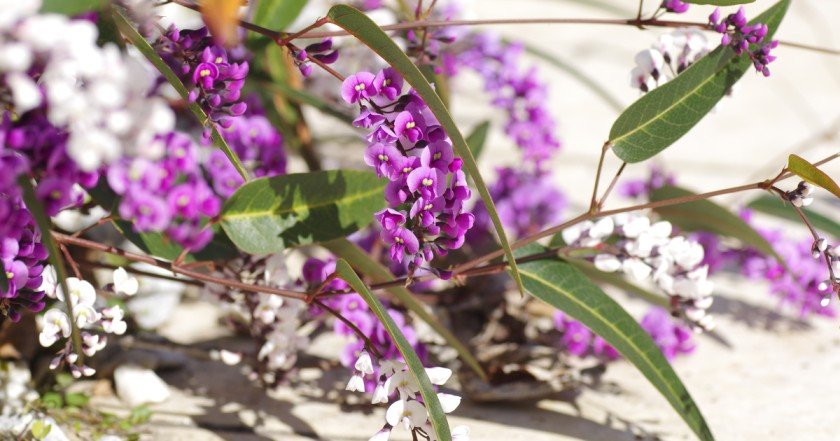
Coral pea is a beautiful evergreen climber with pink, white or purple flowers. Coral pea is also called Hardenbergia violacea flowering plant in the family Fabaceae and is native to Australia.
They are commonly called purple twinning-pea, vine-lilac, and false sarsaparilla. Coral Pea is a climbing shrub, and it has narrow lance leaves. The leaves are usually leathery and pale on the lower surface.
Coral Pea has an egg shape of 1- 4″ long and 0.3-1.97″ long. It also has a wiry stem up to 6-7″ long. The sepal is a bell-shaped tube with triangular teeth that measures 0.12-0.16″ long. They grow well in the sun and in zone 8-11.
10. Chinese Wisteria
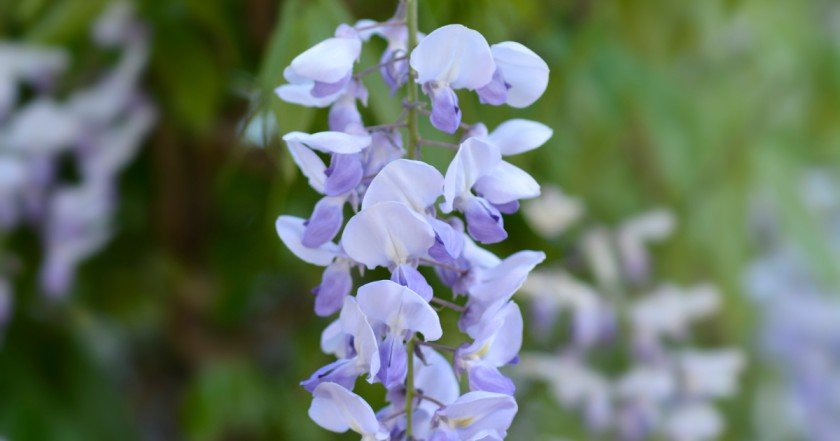
Chinese wisteria, also called wisteria Sinensis, is a fragrant flowering plant native to China in the Hebei, Shaanxi Guangxi province. It is widely planted for its stems and fragrant flower. The plant has a height of 66-98ft tall and shiny green and pinnately compound leaves 10-30 cm long, which are often deciduous.
Chinese wisteria has a white, violet, or blue flower produced on the racemes during spring. It produces a fragrance similar to grapes. The fruit is usually a flattened, bean-like pod about 5-10 cm long with seeds of about 2cm evenly spaced inside. Wisteria regenerates through a process called suckering and layering.
12. Bougainvillea
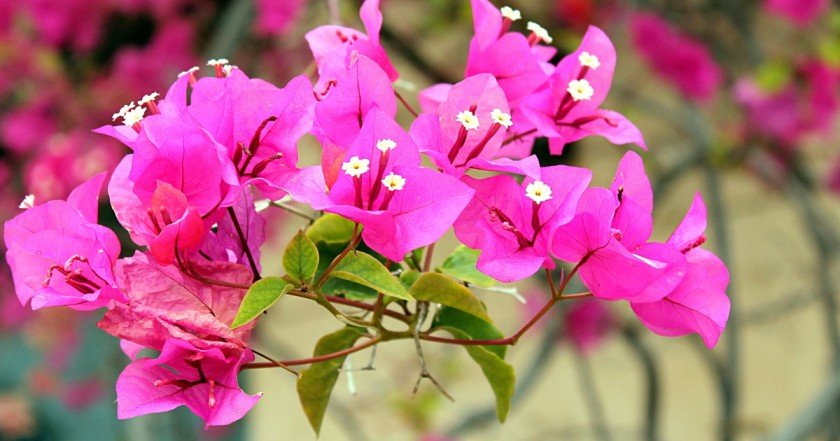
Bougainvillea is an ornamental vine with twisting branches with heart shape and oval leaves belonging to the four 0′ clock family, Nyctaginaceae. It is native to Brazil and Peru. The genus contains 10-30 species. The blooms is made up of colorful sepal bract and simple flowers, which are evergreen or deciduous depending on the climate.
They have simple alternate ovate-acuminate that is 4-13cm long and 3-6cm broad. The flowers are showy and bright, usually white, pink, magenta, purple, red, orange, or yellow. They are also called paper flowers because of the nature of their bracts (thin and paperlike). Bougainvillea grows to a height of 2-12 meters tall.
13. Trumpet Vine
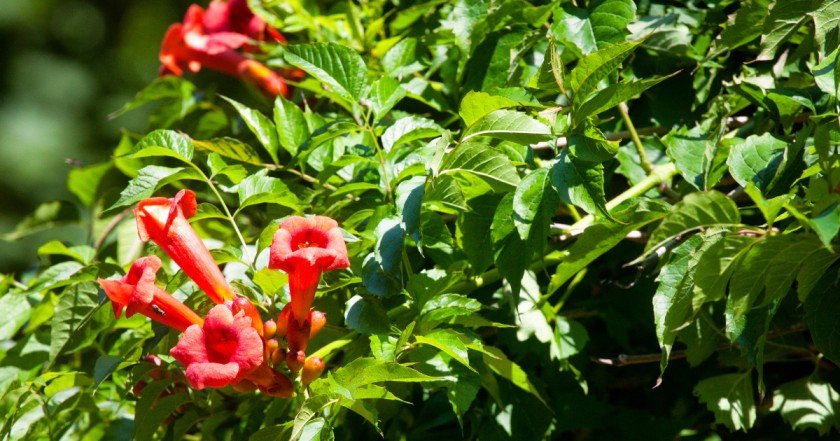
Trumpet vine, also known as Campsis radicals, is a creeper that can grow in various conditions like a heat pump, cold, sunny, or shade. The bright orange and red blooms enhance the overall look of the wall.
Trumpet vine belongs to the family Bignoniaceae. It is native to the Eastern United States and has naturalized worldwide. Trumpet vine grows well in zone 4-9, mostly inhabiting the woodland and riverbanks. It has showy trumpet-shaped flowers and deciduous plants, growing to a height of 10metres.
14. Black-Eyed Susan
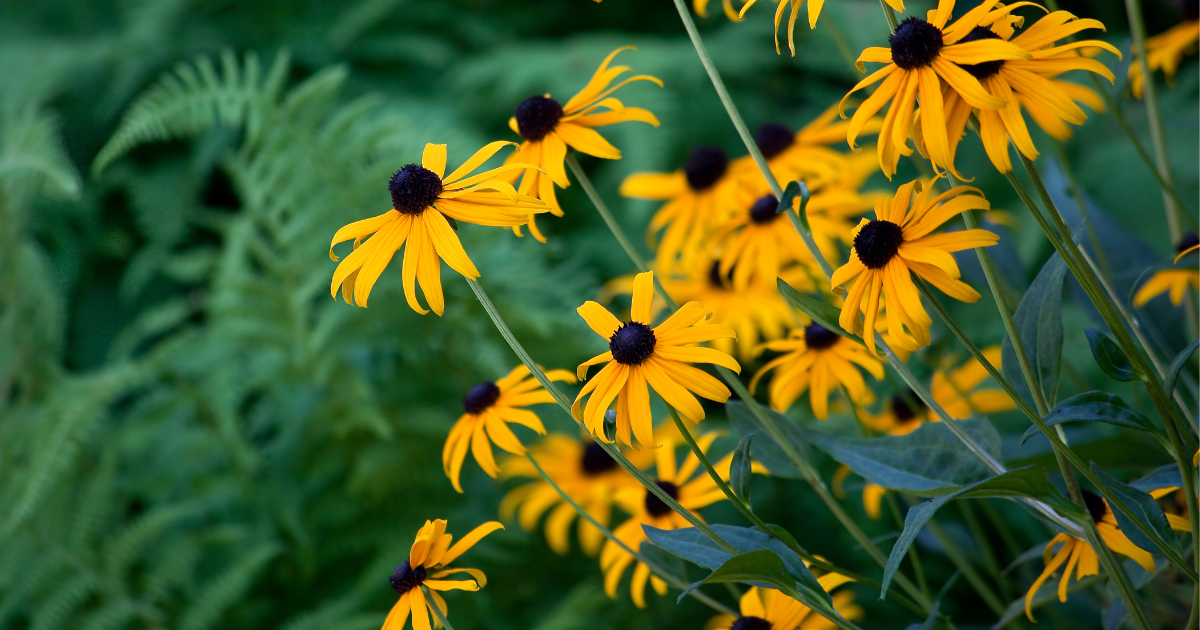
Blacked-eyed Susan is an eye-catching fence-climbing vine also called Thunbergia alata. It is an herbaceous climbing plant family native to Eastern Africa and has spread to other parts of the world. It grows best when combined with purple hyacinth bean or morning glory.
Thunbergia is usually planted as an ornament in gardens. The name is thought to have come from a play by John Gay, where Susan asks the sailors on a ship the whereabouts of her lover, sweet William. Thunbergia can grow up to a height of 16ft tall.
15. Hyacinth Bean
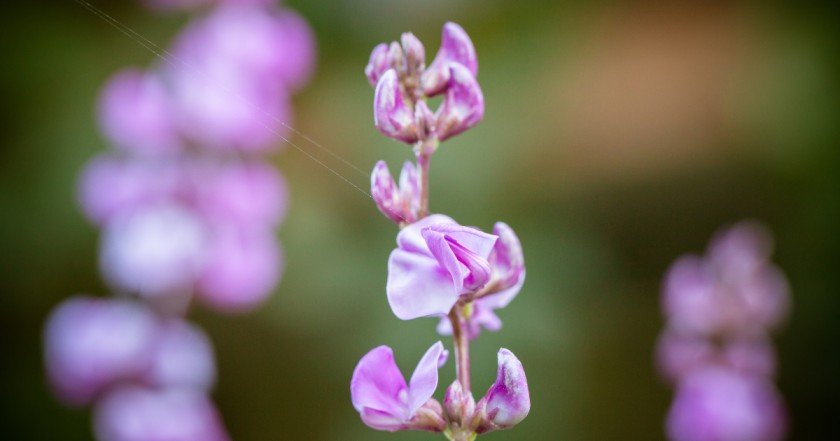
Hyacinth Bean, otherwise known as Dolichos lablab, is an annual or perennial vine of the family Fabaceae, native to Africa. Hyacinth Bean can reach 6m in length; the entire plant can grow 10-15 ft in height.
The leaves of the Hyacinth Bean are partitioned into three leaflets with a diameter of 7.5cm long. The leaves are usually hairy beneath. Hyacinth has white bright purple, and blue flowers. The fruit contains nearly four seeds.
16. Hops
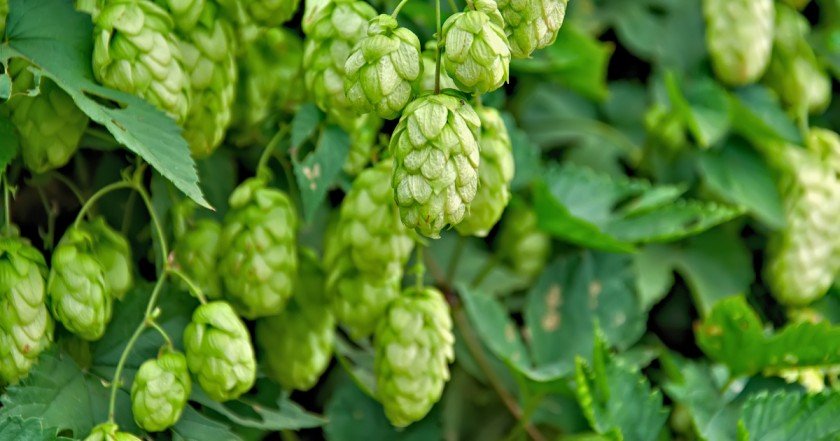
Hops, also called Humulus lupulus, is a climbing vine best for covering fences with tendrils connecting to the walls’ surface. It can grow 15-20 feet in length. Hops are also called strobiles. They are flowering plants from the family Cannabaceae.
Hops are usually used in culinary as a flavoring and a stability agent in beer. It has several citric flavors and fragrances used in beverages and medicine and is mainly a commercial plant. It can grow well from zones 5-9, around Hopfield in the south of England. The crop is usually cultivated for beverage use.
17. Morning Glory
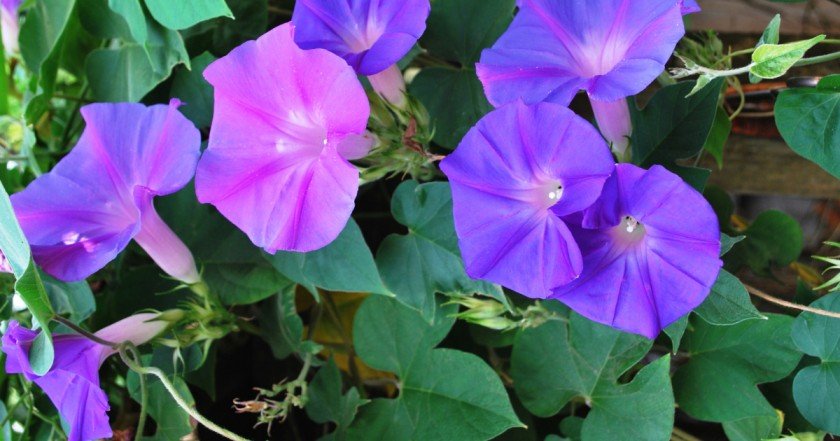
Morning glory, also called Ipomoea purpurea, is a climbing flower that has over 1,000 species all over the world in the family Convolvulaceae. It blooms in the early morning, as the name implies.
Morning glory prefers to be displayed in the sun. Some species, like Ipomoea muricata bloom at night. It has thin tendrils for climbing wires and poles and is easy to maintain, provided there is full sun. Morning glory prefers the temperate region of zone 3-10.
18. Sweet Autumn Clematis
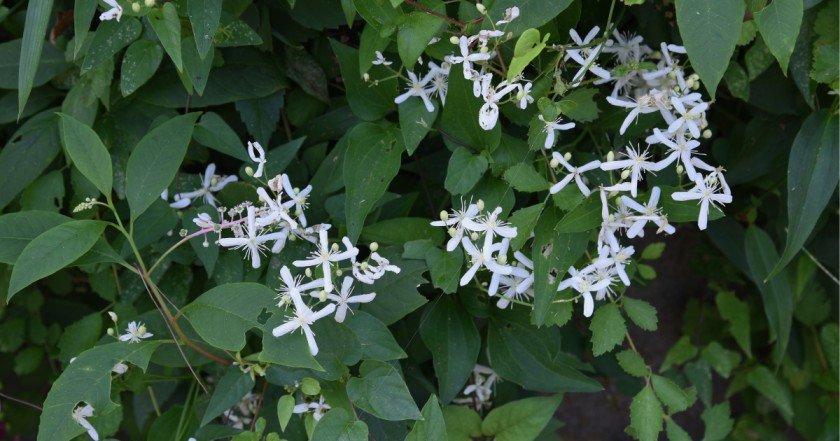
Sweet Autumn clematis, also called clematis terniflora, is a flowering plant in the family Ranunculaceae. It is native to Northern Asia and Russia and was naturalized in the United States around the 1800s and in many eastern states. Sweet Autumn Clematis is widely planted in the garden as an ornamental plant in Zone 5. It is invasive but does not displace native species. In Florida, it is classified into category II.
19. Chocolate Vine

Chocolate vine, also known as Akebia quinata, is an evergreen shrub with compound leaves that consist of five elliptic leaves, giving it the name Five leaves Akebia.
Akebia grows up to 10metre height and is the perfect plant for fences and walls that need privacy. It is native to Northeastern Asia: Japan and China in mountainous slopes, forest edges, and streams. Akebia is categorized as an invasive plant in the United States.
Akebia grows perfectly in the sun but can also thrive in the shade. It has a ligneous grayish-brown stem with fine lenticels. The flowers are chocolate scented and have 3 or 4 petals. The stem is used in folk medicine to cure urinary tract infections, rheumatoid and arthritis
20. Clematis
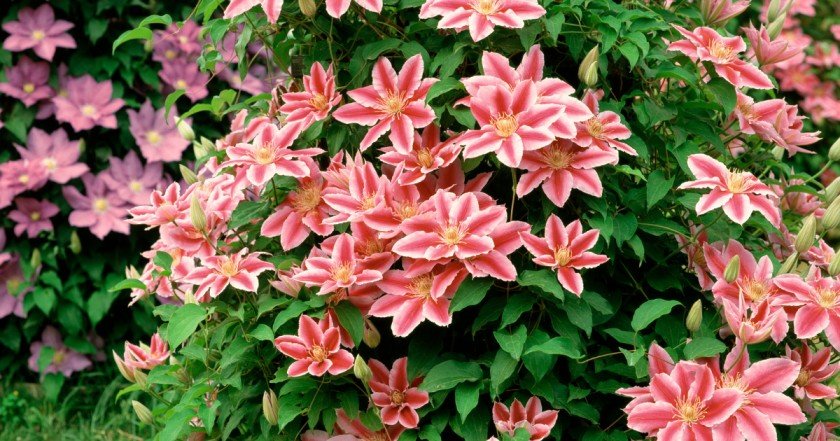
Clematis is a rapidly growing vine with trellis for climbing fences from the buttercup family Ranunculaceae. Over 300 species are found all over the world. It has a leather flower and a fleshy petal. Clematis is native to the Northern Hemisphere and in the tropics. They are mainly food for caterpillars such as willow beauty.
The blooms vary from species to climate and time. In the spring, the clematis blooms on the side shoots of the previous stem. In the summer, it blooms at the end of a new stem. However, some species do both.
